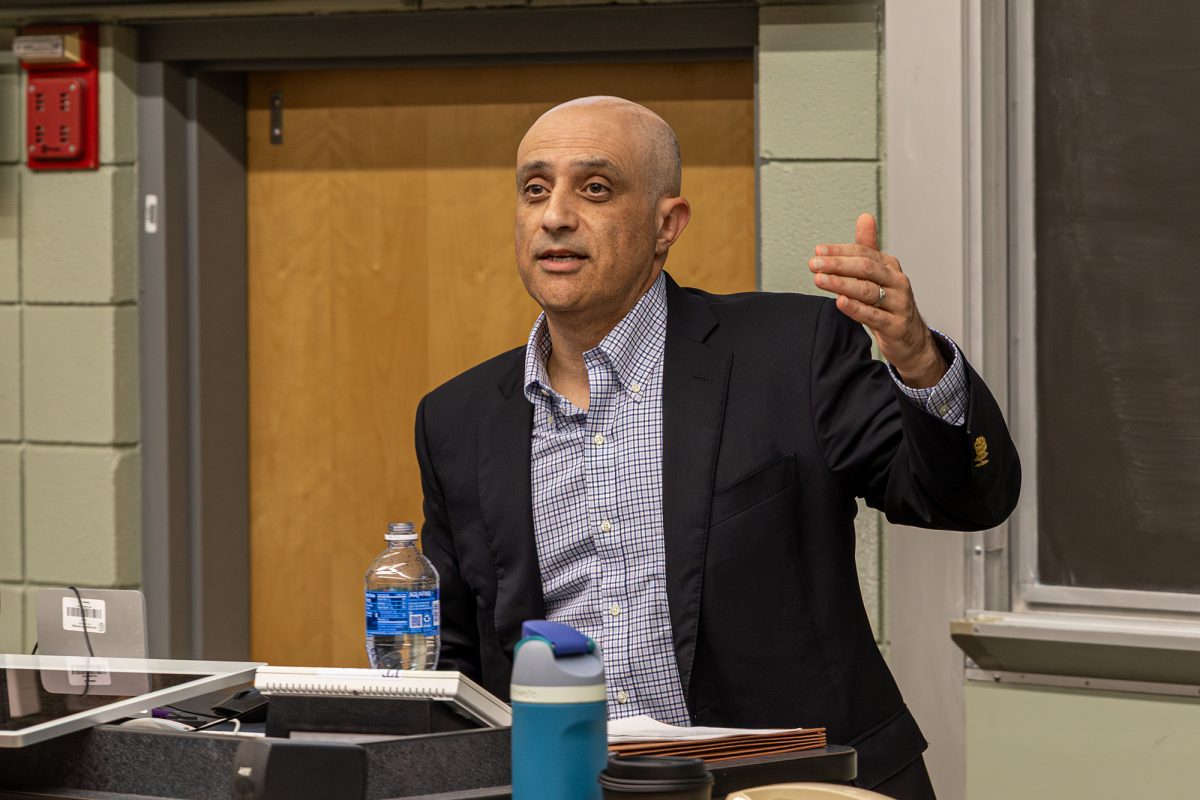President Peggy R. Williams signed a letter of intent Tuesday to join the American College and University President’s Climate Commitment, an agreement between 84 colleges and universities across the country pledging to make their campuses more sustainable.
The agreement, organized by ecoAmerica, Second Nature and the Association for the Advancement of Sustainability in Higher Education, focuses on controlling climate change and curbing the emission of greenhouse gases. Anthony Cortese, president of Second Nature, said Ithaca College’s reputation for sustainable initiatives and its strength in liberal arts contributed to its selection.
“A good liberal arts education is supposed to help us understand how to conduct ourselves in the world,” he said. “Sustainability isn’t just about protecting the environment. In a time of real change in the world, it’s about how we create a world that works for everyone.”
The climate commitment was inspired in part by the U.S. Mayors Climate Protection Agreement passed by the U.S. Conference of Mayors in June 2005, which pledged to reduce pollution in their cities. The President’s Climate Commitment hopes to attract at least 200 colleges and universities by June, Cortese said.
Williams said because of the college’s commitments to continuing the Middle States study, Capital Campaign and provost search, she will sign the formal commitment letter in June. The commitment will launch a two-year process of identifying and implementing a plan to become climate neutral.
“We need to figure out the extent to which we contribute to the problem and then do our best to figure out what actions we can take to mitigate that,” she said. “We can’t go down to zero emissions, obviously, but [we can identify] what actions we take to improve the situation.”
Williams said a one-year inventory of the college’s emissions, including those from fuels, community, electricity and air travel, will begin in September. The college has two years from the signing of the commitment to develop an action plan, which includes a target date to eliminate emissions, developing a system to track the college’s progress and strategies to integrate neutrality and sustainability into educational experiences.
According to Cortese, the college is also one of 57 institutions in the commitment’s leadership circle. Cortese said as part of this group, Williams will send a letter next month to every college and university in the country asking for a commitment.
Marian Brown, special assistant to the provost and vice president of academic affairs, said she expects the entire academic side of the college will be involved in both setting and achieving the commitment’s goals.
“There are certain aspects of the President’s Climate Commitment that are already spelled out, but some of the things the college is going to have to figure out for [itself],” Brown said.
In addition to providing opportunities for student research, internships and projects, Brown said she hoped the commitment would include creating sustainable standards for renovated buildings on campus.
“It wouldn’t necessarily be the same level [as the new School of Business and the Gateway Building], but certainly integrating high performance sustainable design into future renovations,” she said. “We have a lot more older buildings to upgrade than we’re ever going to have new buildings to build.”
Williams said she could not identify any target areas for improvement until committees were established during the summer, but signing the agreement was part of the college’s responsibility to educate the future leaders of the world.
“We have a global crisis with respect to the quality of the environment and global warming,” she said. “If we wait for people to deal with it at the macro level, we may never make any progress.”







